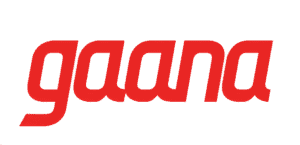Gaana, India’s oldest music streaming firm, fights to stay afloat amidst mounting challenges. Owned by Times Internet Ltd., the once-thriving platform faces losses, unsettled debts, and a fruitless quest for investors.

A potential acquisition by Bharti Airtel, the parent company of Wynk Music, briefly raised hopes before collapsing. Airtel’s reported offer of $12.6 million marked a stark decline from Gaana’s $580 million valuation in 2021.
Current struggles
Despite its past dominance—with a 30% share of India’s music streaming market in 2020 according to Kantar and VTON—Gaana’s future remains uncertain as it continues its search for potential investors.
Since its 2019 entry into the Indian market, Spotify has surged to the forefront, securing a dominant 26% share of music streams, as confirmed by a 2023 Redseer report. In contrast, Gaana, owned by Reliance, has faced stiff competition from Spotify, JioSaavn, Wynk, Apple Music, YouTube Music, and Amazon Prime Music.
Gaana previously drew a substantial following from tier-II, tier-III, and tier-IV cities, capitalizing on tailored pricing, vernacular content, and user-friendly attributes like voice-based search.
Diversion and funding
To diversify, Gaana ventured into the short video realm with HotShots in 2020 post the TikTok ban in India.
Gaana’s financial trajectory includes a cumulative funding of over $242 million, notably $40 million from Tencent Holdings in June 2021, according to Tracxn estimates.
Tencent, initially acquiring a stake in 2018 via a $115 million investment, increased its ownership to 34.4% following the June 2021 funding round.
Gamma Ganna Ltd, the parent company, revealed its FY22 financials in its Registrar of Companies filings, accessed through Tofler. With annual revenue at approximately $16 million (Rs 126 Cr), losses amounted to around $35 million (Rs 316 Cr). This continues a trend from FY21 where losses were roughly Rs 335 Cr.
Although advertising and promotional expenses in FY22 saw a 24.5% reduction, they still stood at Rs 118 Cr.
User engagement and revenue growth
Despite boasting 150 million monthly active users (MAUs) according to its LinkedIn page, sources highlight a divergence between rising MAUs and sluggish revenue growth. While paid subscriptions doubled in H1 2020 compared to 2019, they contributed just over a third of the total income.
Having implemented a paywall strategy post a setback, the anticipated revenue boost hasn’t materialized, with revenues remaining nearly stagnant over the past three years, a senior ad executive noted.
Notable departures have marked Gaana’s recent years. Prashan Agarwal, the CEO of Gaana for five years, vacated his position in March 2021.
Subsequently, Director Joy Basu and Po Shu Yeung resigned in June and September 2022, while Director Mitesh Sampat retired in September 2021 without extension.
Despite these developments, Times Internet remained unresponsive to queries from e4m regarding Gaana’s devaluation and losses.
As of FY22, Gaana’s net worth has been fully depleted. The company’s financial statement indicates concerning events, signaling uncertainty about its future as a going concern.
Revenue and leadership challenges
To stabilize its financial condition, the company is exploring measures such as the proposed sale of Gaana’s business undertaking on a slump sale basis, without debts and cash liabilities.
The company’s efforts to safeguard its financial stability encompass several cost-saving measures, notably a shift from an ad-based revenue model to subscription-based, and renegotiations with music labels.
Furthermore, an agreement has been secured from the Holding Company, Times Internet Limited, for a subscription of optionally convertible debentures Series B1, the company revealed.
The landscape for audio streaming is grappling with challenges, as the ascendancy of platforms like e-commerce and short video restricts revenue potential. Subscription-wise, Over-The-Top Audio (OTTA) faces reluctance from consumers to pay, with many opting for free audio services like YouTube AvoD, Airtel Wynk, and Amazon Music (via Prime membership).
Given substantial royalty expenses, platforms can’t significantly reduce subscription fees, thereby impacting the scalability of both subscription and ad revenue, observes analyst Karan Taurani.
A senior executive from a global media agency highlighted, “Adapting to swiftly evolving user preferences and consumption habits is imperative. Continuous innovation and tailored content curation are essential to navigate changing market dynamics and sustain growth.”







